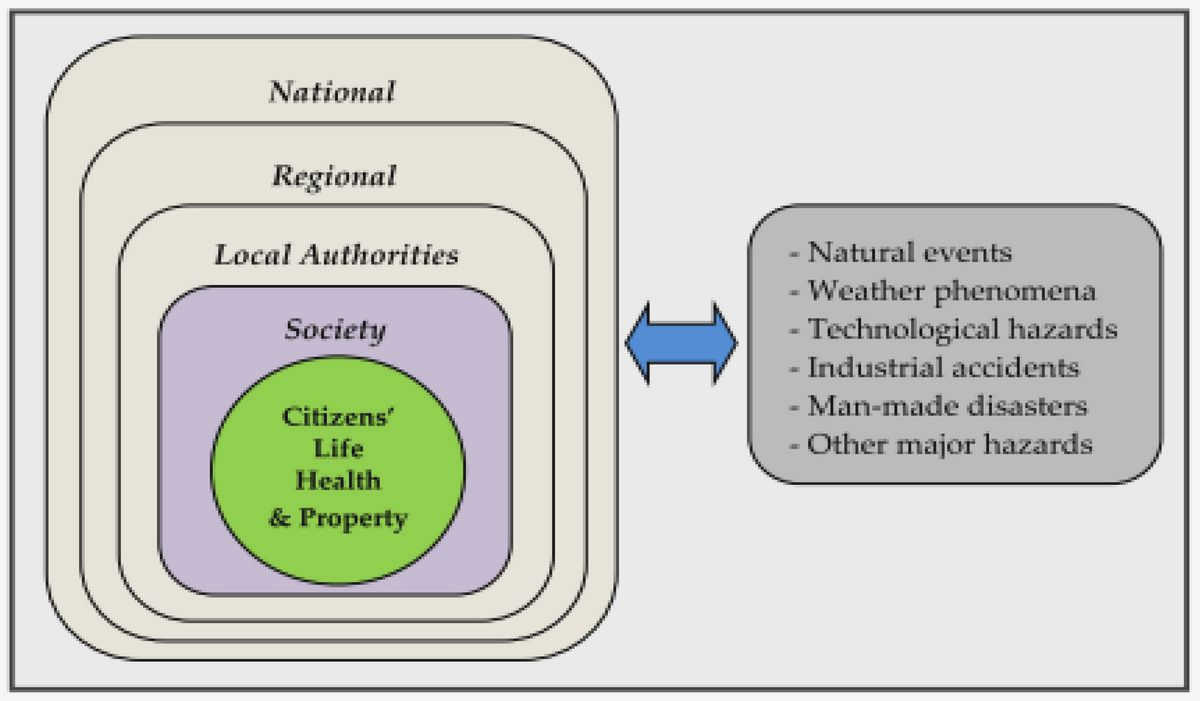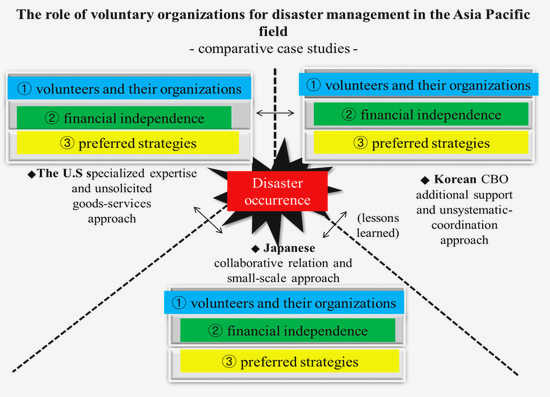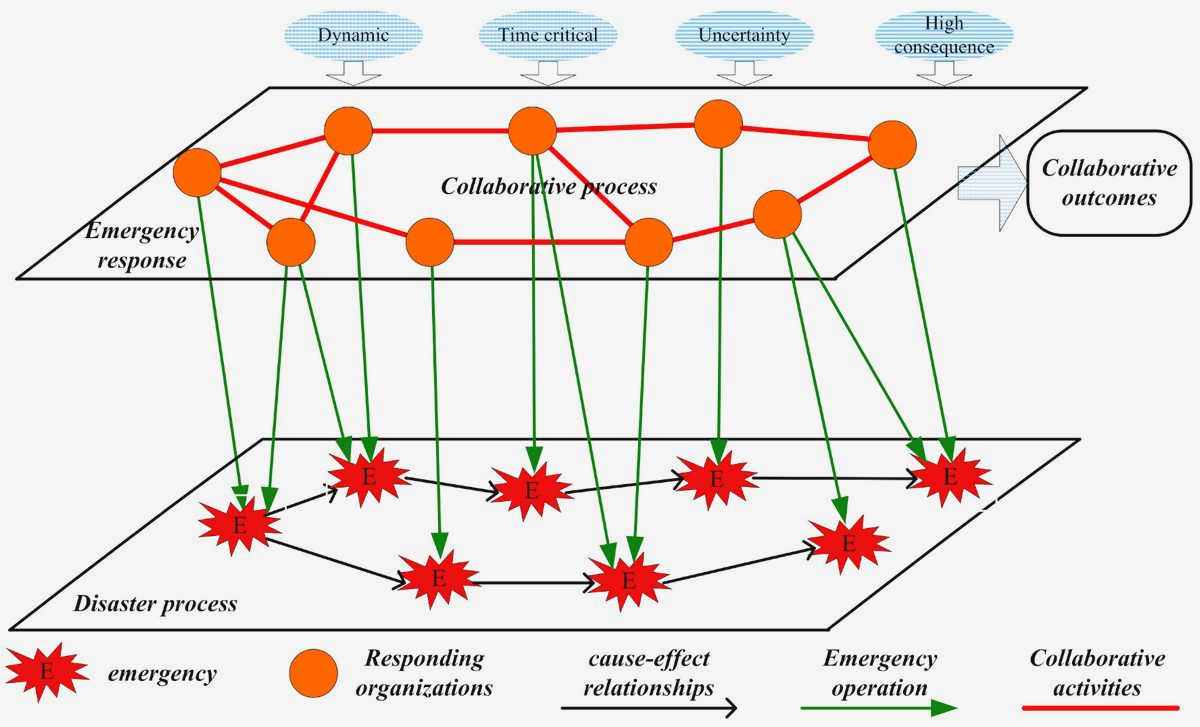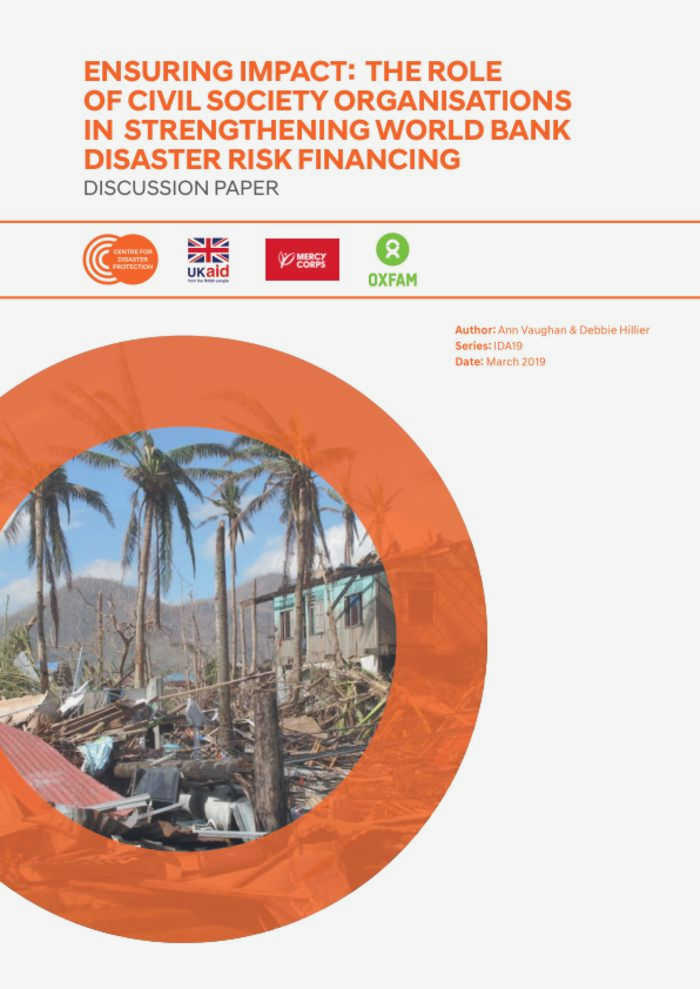Natural disasters, such as earthquakes, hurricanes, and floods, can cause immeasurable damage and devastation. In the face of such emergencies, civil society organizations (CSOs) have emerged as powerful forces for change and relief. These organizations, consisting of non-profit groups, community-based organizations, and grassroots movements, are pooling their resources, knowledge, and expertise to revolutionize disaster relief efforts.
One of the main advantages of CSOs in disaster relief is their ability to collaborate. By working together, CSOs can leverage their strengths, networks, and resources to provide comprehensive and timely assistance to affected communities. Collaboration allows for the sharing of information, best practices, and lessons learned, enabling CSOs to respond more effectively and efficiently to emergencies. Moreover, through collaboration, CSOs can avoid duplication of efforts and ensure that aid reaches those who need it most.
CSOs are also revolutionizing disaster relief through their innovative use of technology and data. With the rise of digital platforms and social media, CSOs are able to mobilize resources and volunteers, gather real-time information, and coordinate relief efforts more swiftly than ever before. Furthermore, CSOs are using data analytics to better understand and predict the impacts of disasters, enabling them to allocate resources and plan interventions more effectively. By harnessing the power of technology and data, CSOs are transforming the way in which disaster relief is approached and implemented.
In addition, CSOs are placing a strong emphasis on community empowerment and participation in disaster relief. Recognizing that affected communities have valuable local knowledge and capabilities, CSOs are actively involving them in decision-making processes and response efforts. This bottom-up approach ensures that relief efforts are tailored to the specific needs and priorities of the community, thus increasing their effectiveness and sustainability. Through community empowerment, CSOs are not only providing immediate relief, but also building resilience and capacity for future disasters.
Leveraging Technology for Faster Response
Civil society organizations have been at the forefront of using technology to improve disaster response. They understand the power of leveraging technology to provide faster and more efficient assistance to affected communities.
One way in which technology is being utilized is through the use of drones. Drones are being used to survey disaster-stricken areas and provide real-time data on the extent of the damage. This information is instrumental in helping relief organizations prioritize their response efforts and allocate resources where they are most needed. By using drones, civil society organizations are able to gather information quickly and accurately, which can ultimately save lives.
Another way technology is being leveraged is through the use of social media platforms. These platforms allow organizations to quickly disseminate information about disaster relief efforts, including instructions on how to access aid and where to find safe shelters. Social media platforms also enable affected individuals to communicate with relief organizations, providing them with valuable information about their needs and whereabouts. This real-time communication helps ensure a faster and more targeted response.
Additionally, civil society organizations are using mobile apps to streamline their disaster response efforts. These apps allow volunteers and relief workers to coordinate their activities, ensuring that resources are deployed efficiently. For example, volunteers can use mobile apps to sign up for specific tasks, such as delivering food and supplies or providing medical assistance. This level of coordination and organization would be much more difficult to achieve without the use of technology.
In conclusion, technology plays a critical role in improving the speed and efficiency of disaster response efforts. Civil society organizations are leveraging technology through the use of drones, social media platforms, and mobile apps to gather information, communicate with affected communities, and coordinate relief efforts. By embracing technology, these organizations are revolutionizing disaster relief and helping to save lives.
Innovations in Logistics and Supply Chain Management
The field of logistics and supply chain management has seen significant innovation in recent years, driven by advancements in technology and a growing recognition of the importance of efficient and effective disaster relief efforts. These innovations have enabled civil society organizations to better coordinate and distribute resources in times of crisis, resulting in improved response times and more targeted assistance.
Real-Time Tracking and Monitoring
One of the key innovations in logistics and supply chain management is the use of real-time tracking and monitoring systems. These systems leverage technologies such as GPS and RFID to provide organizations with up-to-date information on the location, status, and condition of relief supplies. With this information, organizations can more effectively plan and coordinate the distribution of resources, ensuring that aid reaches those in need in a timely manner.
Automated Warehousing and Inventory Management
Another important innovation in logistics and supply chain management is the automation of warehousing and inventory management processes. By using automated systems, organizations can reduce the amount of time and effort required to manage and track inventory, freeing up resources to focus on other critical tasks. Automated systems can also help organizations optimize storage space, minimize waste, and ensure the availability of essential supplies during disaster situations.
Collaborative Platforms and Data Sharing
The emergence of collaborative platforms and data sharing tools has also revolutionized logistics and supply chain management in disaster relief. These platforms allow different organizations and stakeholders to share information, resources, and expertise, enabling more efficient and coordinated response efforts. Through these platforms, organizations can access real-time data on the availability and demand for resources, make informed decisions, and collaborate with others to ensure that resources are allocated where they are most needed.
Last-Mile Delivery Solutions
Last-mile delivery, which refers to the transportation of relief supplies from central distribution points to the final destination, has long been a challenge in disaster relief efforts. However, recent innovations in last-mile delivery solutions are helping to overcome these challenges. Technologies such as drones, autonomous vehicles, and mobile apps are being used to improve the speed, accuracy, and accessibility of last-mile delivery, ensuring that aid reaches even the most remote and difficult-to-reach areas.
Partnerships with Government Agencies for Effective Coordination
In order to effectively respond to disasters and provide timely relief, civil society organizations often establish partnerships with government agencies. These partnerships help to ensure that resources are allocated efficiently, coordination is streamlined, and response efforts are well-coordinated.
Government agencies play a crucial role in disaster response and relief, as they have access to a wide range of resources and expertise. By partnering with these agencies, civil society organizations can tap into this wealth of knowledge and resources, allowing them to better respond to the needs of affected communities.
One of the key benefits of partnering with government agencies is the ability to share information and coordinate efforts. Through regular communication and collaboration, civil society organizations can ensure that their relief efforts are aligned with the overall response strategy of the government. This helps to avoid duplication of efforts and ensure that resources are distributed in a targeted and effective manner.

In addition, partnerships with government agencies can also help civil society organizations navigate bureaucratic processes and overcome logistical challenges. Government agencies often have established networks and relationships with key stakeholders, which can help expedite the delivery of relief supplies and services.
Overall, partnerships with government agencies are essential for effective coordination in disaster relief efforts. By working together, civil society organizations and government agencies can leverage their respective strengths and resources to provide timely and efficient relief to affected communities.
Community Engagement and Empowerment Initiatives
1. Outreach Programs
Community engagement and empowerment initiatives play a crucial role in disaster relief efforts. Organizations often establish outreach programs to connect with local communities and gain their trust. These programs involve regular meetings, workshops, and awareness campaigns to educate community members about disaster preparedness, response, and recovery.
2. Volunteer Mobilization
Engaging volunteers is another effective way to empower communities in disaster relief. Civil society organizations recruit and train volunteers to assist in various tasks, such as search and rescue, first aid, and distribution of relief supplies. By involving community members as active participants, these initiatives instill a sense of ownership and resilience, enabling them to take charge of their own recovery.
3. Capacity Building
Empowering communities goes beyond immediate disaster relief efforts. Organizations also focus on building the capacity of local residents to better respond to future disasters. Capacity building initiatives provide training in areas such as disaster risk reduction, emergency response, and project management. With enhanced skills and knowledge, community members can actively contribute to disaster mitigation and long-term recovery.
4. Information Sharing
Empowerment initiatives also emphasize the importance of information sharing. Organizations work towards creating reliable communication channels between themselves and the community. This can include setting up hotlines, establishing social media platforms, or distributing information pamphlets in local languages. By ensuring that communities have access to accurate and timely information, they can make informed decisions and actively participate in disaster response and recovery efforts.

5. Collaboration and Partnerships
Collaboration and partnerships with local government agencies, businesses, and other civil society organizations are vital for community engagement and empowerment. By leveraging each other’s strengths and resources, such collaborations can develop comprehensive and sustainable initiatives that address the unique needs of each community. These partnerships also create a sense of unity and solidarity, fostering resilience and cooperation in the face of future disasters.

Sharing Best Practices and Lessons Learned
Collaborative Learning
Civil society organizations involved in disaster relief have come to recognize the value of sharing their best practices and lessons learned. Through collaborative learning, these organizations can build upon each other’s experiences, improving the effectiveness and efficiency of their responses to future disasters. By openly sharing what worked well and what didn’t, they can collectively develop knowledge and strategies that contribute to better disaster relief efforts.
Knowledge Sharing Platforms
To facilitate the sharing of best practices and lessons learned, civil society organizations have established knowledge sharing platforms. These platforms serve as centralized repositories of information, where organizations can upload case studies, reports, and other resources detailing their experiences and findings in disaster relief. Accessible to all stakeholders in the sector, these platforms enable widespread dissemination of valuable insights and encourage cross-learning among organizations.
Collaborative Evaluation
Another avenue through which best practices and lessons learned are shared is through collaborative evaluation processes. Civil society organizations involved in disaster relief come together to conduct evaluations of their response efforts, analyzing the impact of their interventions and identifying areas for improvement. By involving multiple organizations in the evaluation process, a broader range of perspectives and expertise can be tapped into, leading to more comprehensive insights and recommendations.
Regular Workshops and Conferences
Workshops and conferences dedicated to disaster relief provide opportunities for organizations to share their best practices and lessons learned with a wider audience. These events bring together experts, practitioners, and policymakers, fostering discussions and knowledge exchange. By presenting their experiences and insights at such gatherings, civil society organizations can inspire others, promote innovation, and collectively drive improvements in disaster relief practices.
Developing Guidelines and Standards
Through collaboration, civil society organizations are also developing guidelines and standards for disaster relief. By aggregating their collective knowledge and experiences, organizations can establish globally recognized protocols that ensure consistency and quality in disaster response. These guidelines and standards serve as a framework for organizations to follow, helping to streamline operations and enhance the overall effectiveness of disaster relief efforts.
Mobilizing Volunteers for Disaster Response
In the wake of natural disasters, mobilizing volunteers is crucial for effective disaster response. Civil society organizations play a key role in coordinating and organizing these volunteers, ensuring that their efforts are focused and impactful.
Engaging the community: Civil society organizations collaborate with local communities to mobilize volunteers. They work closely with community leaders and organizations to identify and engage individuals who are willing and able to contribute their time and skills. By involving the community in the decision-making process, these organizations create a sense of ownership and empowerment, which leads to more effective and sustainable disaster response efforts.
Training and capacity building: Mobilizing volunteers for disaster response requires more than just enthusiasm. Civil society organizations provide training and capacity building programs to ensure that volunteers have the necessary skills and knowledge. These programs cover a wide range of topics, including first aid, search and rescue techniques, and disaster management protocols. By investing in volunteer training, organizations ensure that their response teams are well-prepared and can effectively contribute to disaster relief efforts.
Coordinating logistics: Mobilizing volunteers is not just about recruiting individuals – it also involves coordinating logistics to ensure smooth operations. Civil society organizations establish communication channels and information systems to effectively manage and deploy volunteers. This includes creating volunteer databases, scheduling shifts and tasks, and providing necessary equipment and supplies. By streamlining logistics, these organizations maximize the impact of their volunteer networks and ensure efficient disaster response.
Providing support and recognition:
Mobilizing volunteers for disaster response can be physically and emotionally demanding. Civil society organizations understand this and provide support to ensure the well-being of their volunteers. They offer counseling services, medical support, and access to resources for self-care. Additionally, these organizations recognize the invaluable contributions of their volunteers through public acknowledgement and appreciation events. By offering support and recognition, civil society organizations foster a sense of belonging and motivation among volunteers, encouraging their continued involvement in disaster relief efforts.
In conclusion, mobilizing volunteers for disaster response is a complex task that requires effective coordination, training, and support. Civil society organizations play a crucial role in this process, engaging the community, providing training, coordinating logistics, and offering support and recognition. Through their collaborative efforts, these organizations revolutionize disaster relief and contribute to building more resilient communities.
Advocacy and Policy Influence to Improve Disaster Relief Efforts
Advocacy plays a crucial role in improving disaster relief efforts by bringing attention to the needs of affected communities and influencing policy changes. Civil society organizations (CSOs) utilize their expertise and experience to advocate for more effective and efficient disaster response and recovery strategies.
1. Awareness and Education:
CSOs engage in advocacy efforts to raise awareness about the challenges faced by disaster-affected communities, including the need for adequate resources, coordination, and support. By educating policymakers and the public about the realities on the ground, CSOs can inspire action and mobilize support for comprehensive disaster relief efforts.
Through campaigns, media outreach, and public events, CSOs can effectively communicate the impact of disasters and the importance of investing in resilient infrastructure, early warning systems, and disaster risk reduction measures.
By providing accurate and timely information on the evolving needs of communities affected by disasters, CSOs can inform and influence policy decisions that lead to improved disaster relief efforts.
2. Policy Development and Implementation:
CSOs play a vital role in shaping disaster relief policies and advocating for their effective implementation. They work closely with government agencies, international organizations, and other stakeholders to develop comprehensive and inclusive policies that address the unique challenges faced by communities impacted by disasters.
CSOs use their expertise in disaster response and recovery to provide input and recommendations during policy development processes. They advocate for policies that prioritize community participation, gender equality, and social inclusion, ensuring that the needs and rights of vulnerable groups are addressed.
Through policy influence, CSOs can help create an enabling environment for disaster preparedness and response, fostering collaboration between different stakeholders and promoting the use of evidence-based approaches.
- Networking and Collaboration: CSOs collaborate and network with other organizations, government agencies, and community groups to amplify their advocacy efforts and create joint platforms for policy influence. By working together, they can leverage their collective knowledge, resources, and influence to bring about meaningful change in disaster relief efforts.
- Monitoring and Evaluation: CSOs actively monitor and evaluate the implementation of disaster relief policies to assess their effectiveness and identify areas for improvement. Through independent assessments and feedback mechanisms, they can hold governments and other stakeholders accountable for their commitments and ensure that policies are aligned with the needs of affected communities.
- Representation and Voice: CSOs strive to ensure that the voices of disaster-affected communities are heard and represented in policy-making processes. They empower communities to actively participate in decision-making and advocate for their rights and needs. By promoting inclusivity and representation, CSOs contribute to more equitable and effective disaster relief efforts.
In conclusion, advocacy and policy influence are essential tools in improving disaster relief efforts. CSOs play a crucial role in raising awareness, shaping policies, and advocating for their effective implementation. By collaborating, monitoring, and empowering communities, CSOs contribute to more comprehensive, inclusive, and sustainable disaster relief strategies.
Cultivating Local Leadership in Disaster Management
Disaster management requires effective leadership to ensure that resources are allocated efficiently and communities are adequately supported during times of crisis. Cultivating local leadership in disaster management is essential for promoting sustainable and effective outcomes.
One way to cultivate local leadership is by empowering community members to take an active role in disaster preparedness and response. This can be achieved through training programs that provide individuals with the necessary knowledge and skills to effectively coordinate disaster relief efforts.
Local leaders play a crucial role in disaster management as they have a deep understanding of the unique challenges and resources within their communities. By involving them in decision-making processes, disaster management strategies can be tailored to meet the specific needs of each community.
Collaboration between civil society organizations and local leadership
Collaboration between civil society organizations and local leadership is key to cultivating effective disaster management practices. A strong partnership allows for the sharing of resources, expertise, and networks, ultimately enhancing the overall disaster response and recovery efforts.
By working together, civil society organizations and local leaders can leverage their respective strengths to address the complex challenges associated with disaster management. Civil society organizations bring expertise in areas such as logistics, communication, and fundraising, while local leaders provide valuable insight and knowledge about their communities.
Building capacity and resilience
Cultivating local leadership in disaster management also involves building the capacity and resilience of communities. This can be achieved through education and awareness programs that empower individuals to take proactive measures in disaster preparedness.

Local leadership can play a critical role in promoting these programs and ensuring that community members have access to the necessary resources and information. By building the capacity and resilience of communities, the impact of disasters can be mitigated, and communities can recover more quickly.
Overall, cultivating local leadership in disaster management is crucial for promoting sustainable and effective outcomes in disaster response and recovery. By empowering community members and fostering collaboration between civil society organizations and local leaders, communities can be better prepared to face the challenges of disasters and build a more resilient future.
Building Resilient Communities through Preemptive Measures
Educating Communities:
One key preemptive measure to build resilient communities is through education. By educating community members about potential hazards and disasters, they can be better prepared to respond and recover. This includes providing information on evacuation routes, emergency contacts, and basic first aid techniques. By ensuring that everyone understands the risks they face and how to mitigate them, communities can be better equipped to handle disasters.
Increasing Infrastructure Resilience:
An essential aspect of building resilient communities is strengthening infrastructure to withstand potential disasters. This can involve retrofitting buildings to meet higher safety standards, reinforcing critical structures such as hospitals and schools, and implementing early warning systems. By investing in resilient infrastructure, communities can reduce the impact of disasters and ensure a faster recovery.
Promoting Community Engagement:
Engaging the community in disaster preparedness and response is crucial for building resilience. Through outreach programs, workshops, and community meetings, organizations can empower individuals to take an active role in disaster planning. This can include training community members in disaster response techniques, organizing drills and simulations, and fostering community networks to support each other during emergencies.
Collaborating with Local Authorities:
Effective collaboration between civil society organizations and local authorities is key in building resilient communities. By working together, these groups can combine their resources, knowledge, and expertise to develop comprehensive disaster management plans. This includes coordinating response efforts, sharing information, and conducting joint training exercises. By building strong partnerships, communities can ensure a unified and coordinated approach to disaster preparedness.
Investing in Early Warning Systems:
Early warning systems play a crucial role in reducing the impact of disasters. By investing in advanced technologies and systems, communities can receive timely and accurate information about potential hazards. This allows for early evacuation, providing people with enough time to prepare and respond. Additionally, early warning systems can also facilitate faster response and recovery efforts, as emergency services can be mobilized promptly.
Building Resilient Communities: A Collective Effort:
Building resilient communities is a collective effort that requires collaboration and cooperation from various stakeholders. Civil society organizations, local authorities, community members, and other relevant actors must come together to develop and implement preemptive measures. By working together, we can create communities that are better prepared to face disasters and can recover more quickly and effectively.
Overcoming Barriers: Addressing the Challenges of Collaboration
1. Communication:
One of the main challenges that civil society organizations (CSOs) face when it comes to collaboration is communication. Effective communication is crucial for successful collaboration, but it can be difficult to achieve when working with different organizations, each with their own communication styles and preferences. CSOs need to establish clear channels of communication, such as regular meetings or online platforms, to ensure that all involved parties are kept informed and can share information and updates in a timely manner. Regular and transparent communication can help overcome the barriers caused by differing communication methods and ensure a smooth collaboration process.

2. Resource Allocation:
Another challenge in collaboration is the allocation of resources. CSOs often have limited resources, including funding, personnel, and equipment, which can make it difficult to collaborate effectively. In order to address this challenge, CSOs can explore resource-sharing partnerships, where organizations pool their resources to maximize their impact. This can involve sharing equipment, expertise, or even co-funding projects. By collaborating on resource allocation, CSOs can overcome the barriers caused by limited resources and achieve greater impact in their disaster relief efforts.
3. Cultural Differences:
Cultural differences can also pose challenges to collaboration. CSOs may come from different backgrounds, with their own unique values, beliefs, and ways of working. These differences can sometimes lead to misunderstandings or conflicts, making collaboration more difficult. To address this challenge, CSOs can focus on building cultural competence within their organizations. This can involve cultural sensitivity training, fostering a culture of respect and understanding, and actively seeking input and perspectives from diverse individuals and communities. By embracing cultural differences and promoting inclusivity, CSOs can overcome the barriers caused by cultural diversity and work together more effectively.
4. Decision-making:
Decision-making can be a challenge in collaborative efforts. CSOs may have different priorities, objectives, or approaches, which can lead to disagreements and delays in decision-making. To address this challenge, CSOs can establish clear decision-making processes and frameworks that include representatives from all involved organizations. This can ensure that decisions are made collectively and in the best interest of all parties involved. By promoting transparency and inclusivity in decision-making, CSOs can overcome the barriers caused by differing perspectives and achieve consensus more effectively.
5. Monitoring and Evaluation:
Monitoring and evaluation is essential for measuring the impact of collaboration and identifying areas for improvement. However, it can be challenging to implement effective monitoring and evaluation processes when working with multiple organizations. CSOs can address this challenge by establishing clear monitoring and evaluation frameworks that outline key performance indicators, data collection methods, and reporting processes. By regularly monitoring and evaluating their collaborative efforts, CSOs can identify successes and challenges, make necessary adjustments, and optimize their disaster relief efforts.
In conclusion, collaboration among civil society organizations in the field of disaster relief is a powerful tool for revolutionizing relief efforts. However, it is not without its challenges. By actively addressing and overcoming barriers such as communication, resource allocation, cultural differences, decision-making, and monitoring and evaluation, CSOs can enhance their collaborative efforts and achieve greater impact in their relief work.





